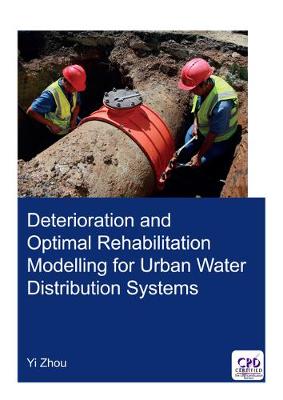IHE Delft PhD Thesis
1 total work
Deterioration and Optimal Rehabilitation Modelling for Urban Water Distribution Systems
by Yi Zhou
Pipe failures in water distribution systems can have a serious impact and hence it's important to maintain the condition and integrity of the distribution system. This book presents a whole-life cost optimisation model for the rehabilitation of water distribution systems. It combines a pipe breakage number prediction model with a pipe criticality assessment model, which enables the creation of a well-constructed and more tightly constrained optimisation model. The pipe breakage number prediction model combines information on the physical characteristics of the pipes with historical information on breakage and failure rates. A weighted multiple nonlinear regression analysis is applied to describe the condition of different pipe groups. The criticality assessment model combines a pipe's condition with its hydraulic significance through a modified TOPSIS. This model enables the optimisation to focus its efforts on those important pipes. The whole life cost optimal rehabilitation model is a multiple-objective and multiple-stage model, which provides a suite of rehabilitation decisions that minimise the whole life cost while maximising its long-term performance. The optimisation model is solved using a modified NSGA-II. The utility of the developed models is that it allows decision makers to prioritize their rehabilitation strategy in a proactive and cost-effective manner.
